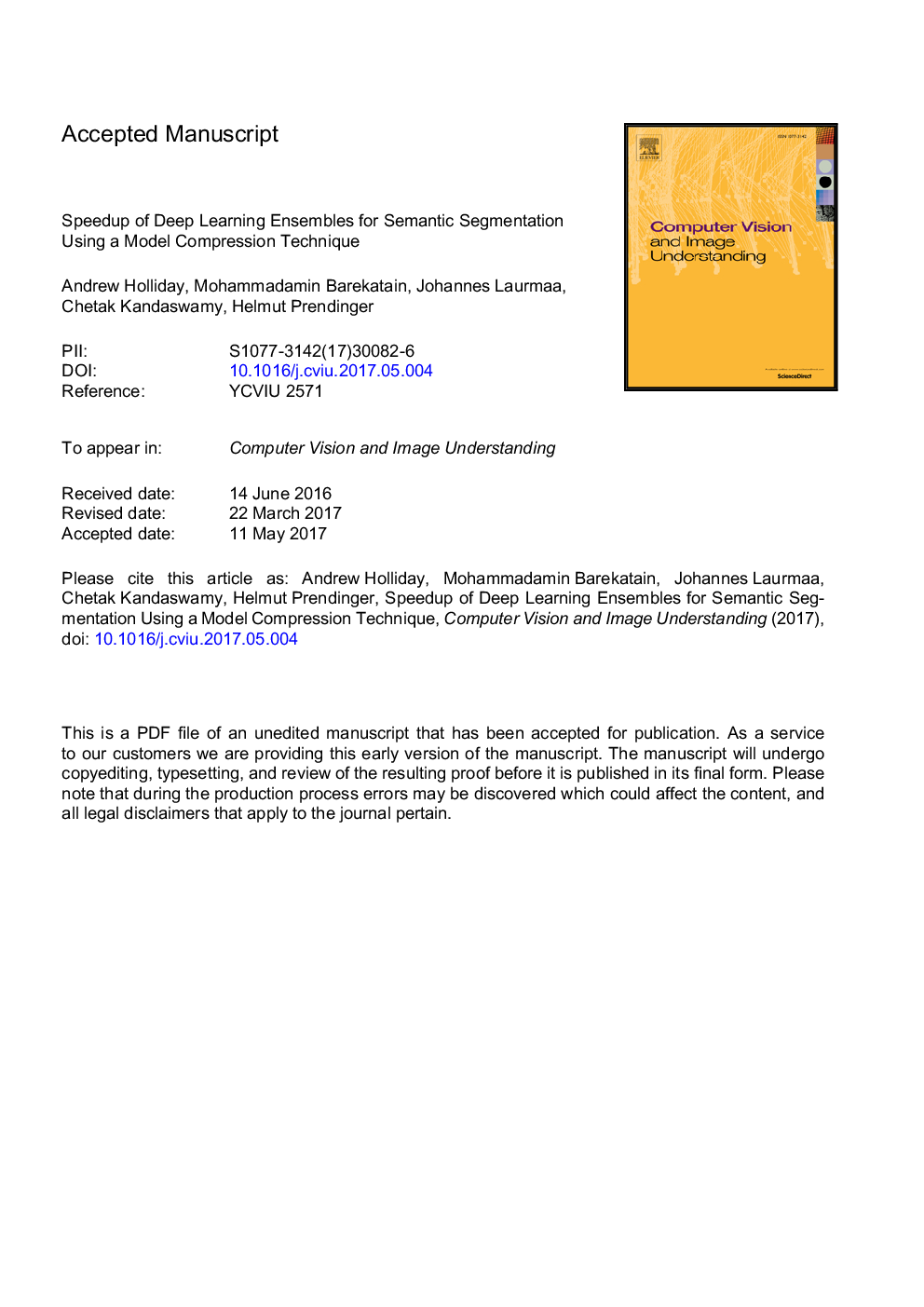| Article ID | Journal | Published Year | Pages | File Type |
|---|---|---|---|---|
| 6937472 | Computer Vision and Image Understanding | 2017 | 34 Pages |
Abstract
Deep Learning (DL) has been proven as a powerful recognition method as evidenced by its success in recent computer vision competitions. The most accurate results have been obtained by ensembles of DL models that pool their results. However, such ensembles are computationally costly, making them inapplicable to real-time applications. In this paper, we apply model compression techniques to the problem of semantic segmentation, which is one of the most challenging problems in computer vision. Our results suggest that compressed models can approach the accuracy of full ensembles on this task, combining the diverse strengths of networks of very different architectures, while maintaining real-time performance.
Related Topics
Physical Sciences and Engineering
Computer Science
Computer Vision and Pattern Recognition
Authors
Andrew Holliday, Mohammadamin Barekatain, Johannes Laurmaa, Chetak Kandaswamy, Helmut Prendinger,
